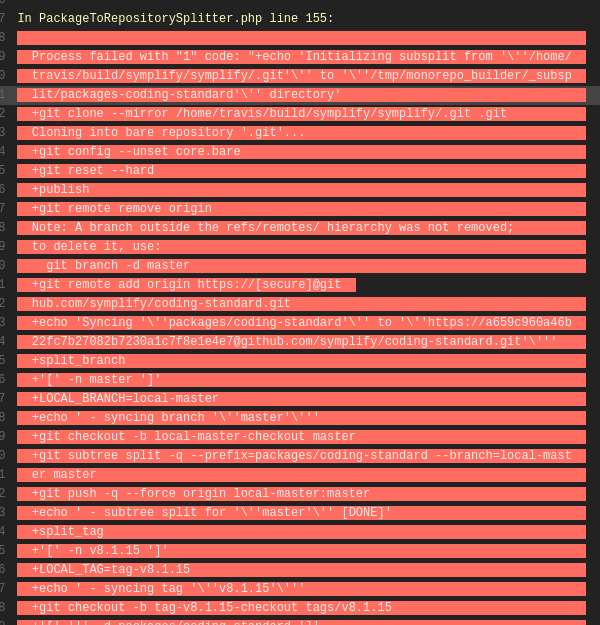Symplify Monorepo Builder Split - Fractal of Bad Design
Splitting monorepo is a trivial operation of getting some code to some repository. Unless your take into rocket science like Symplify does. It is slow, complicated, and doesn't work on GitHub, where the open-source lives.
1. It's Super Slow
Symplify/MonorepoBuilder is easy to set up and easy to use:
vendor/bin/monorepo split
But the split operation itself is not really Usain Bolt among instant feedbacks:
"...symplify/monorepo-builder ... **takes ~20 minutes** to go through and roll out all packages, one by one"
As for Symplify, if we merge pull-request, it takes ~8 minutes to use the code. It takes ~4 minutes of waiting for Travis to notice, then 3 minutes to split ~15 packages, and 1 minute to trigger Packagist.
Found a typo in the return type? Commit and... wait 8 minutes. That is bad and breaks the flow and your productivity.
2. It's so Slow, Despite having Parallel Run
A typical solution for such performance issues is running it in parallel processes. The speed gain is x-times, where x is the number of CPUs your machine has.
vendor/bin/monorepo-builder split --max-processes 6
Before we added parallel run, it took over 7 minutes on just 8 packages!
3. It's Rocket Science at it's Worst
What is a monorepo split?
- take some subdirectory
- push it into some remote git repository
That's it! Nothing fancy, nothing that needs an MIT degree. Still, the Symplify implementation includes these layers:
- git to do the split
- 163-lines bash script to handle the git
- PHP command to wrap the bash script
- Travis bash script to run the PHP command in CLI
- ...

Why keep it simple, right?
4. It has The Worst Error Message Output
Thanks to previous Inception-complexity, the code can break in any of these layers. From git to invalid bash syntax to a tool that wraps the Git API in PHP or typo in the target directory.
In reality, you get something like this:

I do appreciate a good error message.
5. It Depends on both Travis and GitHub
If you want to make it work on your monorepo, you have to follow these steps:
- go to GitHub to get a token
- go to Travis, set the token
- add .travis.yml
- add monorepo-builder.yml

The vendor-lock on 2 services - GitHub and Travis - might be do-able for open-source maintainers. But if you just want to start with monorepo, learning 2 services at once is a killer.
There is no need for that. And yes, there is a better way to handle automated monorepo split. I'll show you in the next post.
Happy coding!
Do you learn from my contents or use open-souce packages like Rector every day?
Consider supporting it on GitHub Sponsors.
I'd really appreciate it!